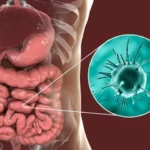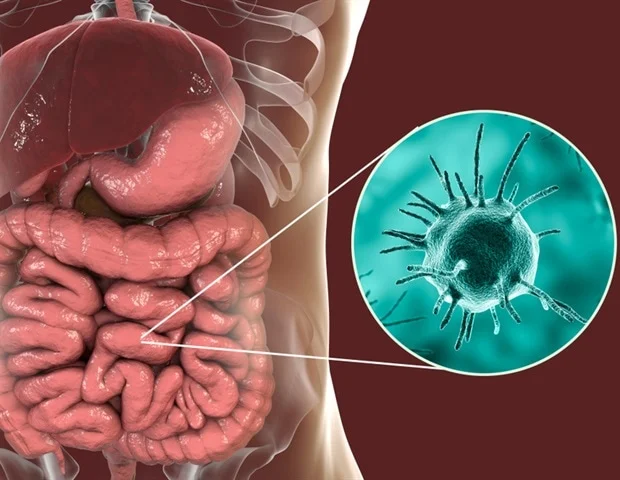Tennis elbow, also known as lateral epicondylitis, is a painful condition caused by overuse of the forearm muscles, leading to inflammation and microtears in the tendons connecting to the elbow. Though commonly associated with tennis players, it affects anyone performing repetitive arm and wrist motions—such as office workers, painters, and even cooks. Fortunately, 2025 has brought a wave of innovative medical devices designed to provide targeted relief, reduce inflammation, and enhance the healing process. This article explores the top medical devices available in 2025 to treat tennis elbow effectively, whether for professional athletes or everyday individuals seeking comfort and recovery.
One standout product in this space is the Tennis Elbow Medical Devices, specifically the Push Med Elbow Brace. Designed with anatomical precision, this brace provides exceptional support while allowing freedom of movement, making it one of the top choices for conservative treatment in 2025.
Understanding Tennis Elbow and Its Impact
Before diving into the best medical devices, it’s essential to understand what makes tennis elbow such a persistent issue. The condition affects the tendons on the outside of the elbow joint and is generally caused by repetitive wrist and arm motions. Symptoms include:
- Pain or burning on the outer part of the elbow
- Weak grip strength
- Pain that worsens with forearm activity
Left untreated, tennis elbow can become chronic, interfering with daily life and work. This is why targeted medical interventions, especially devices designed for stabilization and recovery, are critical.
What Makes a Great Medical Device for Tennis Elbow?
Effective treatment of tennis elbow depends on reducing inflammation, promoting healing, and avoiding movements that aggravate the condition. High-quality medical devices offer:
- Compression: Reduces swelling and improves blood flow.
- Stabilization: Limits harmful movements while allowing healthy mobility.
- Ergonomics: Comfort and fit tailored to the user’s anatomy.
- Breathable materials: Prevents irritation during extended use.
With these factors in mind, here are the top medical devices for tennis elbow in 2025.
- Push Med Elbow Brace – A Leader in Targeted Relief
The Push Med Elbow Brace continues to lead the market in 2025, offering superior anatomical design for treating lateral epicondylitis. It applies localized pressure to the forearm muscles, relieving strain on the tendon attachment at the elbow.
Features:
- Adjustable strap for personalized compression
- Semi-rigid pad targeting the extensor muscles
- Lightweight and breathable fabric
- Designed for both right and left arms
This brace is ideal for individuals who require both mobility and structured support during recovery. It’s especially beneficial for professionals who cannot take extended time off but need to manage symptoms effectively.
- EpiTrain Elbow Support – Compression and Comfort Combined
The EpiTrain Elbow Support from Bauerfeind is another top-tier device in 2025. Its 3D knit structure offers graduated compression to reduce pain and swelling, while integrated pads provide targeted massage to the irritated area.
Key Advantages:
- Seamless construction reduces skin irritation
- Medical-grade compression promotes circulation
- Dual pads for focused pain relief
This support is perfect for people in the early stages of tennis elbow or those recovering post-treatment who need support during physical activity.
- Theraband FlexBar – Strengthening for Prevention and Recovery
Though not a brace, the Theraband FlexBar is an important tool for the prevention and rehabilitation of tennis elbow. Its eccentric loading exercises are backed by research for their effectiveness in tendon healing.
Highlights:
- Available in various resistance levels
- Portable and easy to use at home
- Proven to reduce pain through consistent use
FlexBars are especially recommended for patients once acute pain has subsided and strengthening is the focus.
- Cold Compression Therapy Devices – Dual Action Healing
Cold compression wraps and machines, such as the Aircast Cryo Cuff, combine cold therapy with intermittent compression to reduce inflammation and numb pain. These are widely used post-injury or post-surgery.
Benefits:
- Immediate relief from pain
- Reduces swelling in the acute phase
- Useful after physical therapy or workouts
This type of therapy should be used under medical supervision to avoid overuse or skin damage from excessive cold.
- Kinesiology Tape – Lightweight Support On-the-Go
Kinesiology tape, often seen on athletes, provides low-profile support and proprioceptive feedback that helps reduce strain during movement. Brands like KT Tape and RockTape are popular in 2025 due to their durability and skin-friendly adhesives.
Usefulness:
- Helps in correcting muscle alignment
- Non-invasive and discreet
- Offers freedom of movement while supporting muscles
Though not as stabilizing as a brace, kinesiology tape can be a great adjunct during lower-impact activities or in the final stages of recovery.
- Forearm Strap Braces – Minimalist Yet Effective
Forearm straps, or counterforce braces, are still a go-to choice for many experiencing mild to moderate symptoms. These apply direct pressure to the extensor muscles of the forearm to relieve tendon strain.
Top Picks in 2025:
- Mueller Adjustable Elbow Strap
- DonJoy Forearm Band
These are affordable, easy to use, and effective for short-term use, especially during physical tasks.
- Smart Wearables – The Future of Monitoring & Rehab
2025 has seen a rise in smart wearables designed for rehabilitation. These devices use motion sensors, biofeedback, and app integration to monitor arm movement and guide therapeutic exercises.
Innovative Features:
- Real-time feedback to avoid harmful movements
- Integration with smartphones for exercise tracking
- Alerts for overuse or incorrect posture
Devices like Kemtai or Kinetisense have started gaining popularity among physiotherapists and tech-savvy patients looking for guided home rehabilitation.
- Ultrasound Therapy Devices – Deep Healing at Home
Ultrasound therapy is gaining ground as an effective at-home treatment for tennis elbow. These devices use high-frequency sound waves to promote tissue healing and reduce inflammation deep within the tendons.
Recommended Devices:
- US Pro 2000
- Richmar Theratouch
Users can apply ultrasound gel and use the device in specific areas for a set time, usually recommended by a physical therapist.
- ASO Ankle Brace – A Surprising Ally in Elbow Recovery
While it may seem unrelated, the ASO Ankle Brace has been included by therapists as part of whole-body alignment therapy. Improper gait or posture due to lower body instability can exacerbate strain on the upper body, including the elbow.
How It Helps:
- Improves lower-body alignment
- Enhances stability during movement
- Indirectly reduces compensatory strain on the elbow
In cases where elbow pain stems from whole-body imbalances, ankle support can be a critical piece of the puzzle.
- Night Splints – Restorative Recovery While You Sleep
Night splints are designed to keep the elbow in a neutral position during sleep, preventing prolonged muscle contraction and pressure on the inflamed tendons. This passive treatment is gaining popularity in 2025.
Why They’re Effective:
- Promotes healing by keeping tendons elongated
- Reduces morning stiffness and pain
- Easy to integrate into nightly routine
Many patients report improved symptoms after consistent nightly use.
Conclusion: Choosing the Right Device for Your Condition
Treating tennis elbow requires a combination of rest, rehabilitation, and smart use of medical devices. In 2025, patients are fortunate to have access to a wide range of innovative tools designed to address pain, prevent re-injury, and accelerate recovery. Whether you need a heavy-duty elbow brace, smart wearable guidance, or supportive taping, there’s a device tailored for every phase of healing.
It’s always best to consult with a healthcare provider before starting any new treatment regimen. However, incorporating one or more of the devices listed above can significantly improve your recovery journey and help you return to pain-free movement with confidence.















Leave a comment